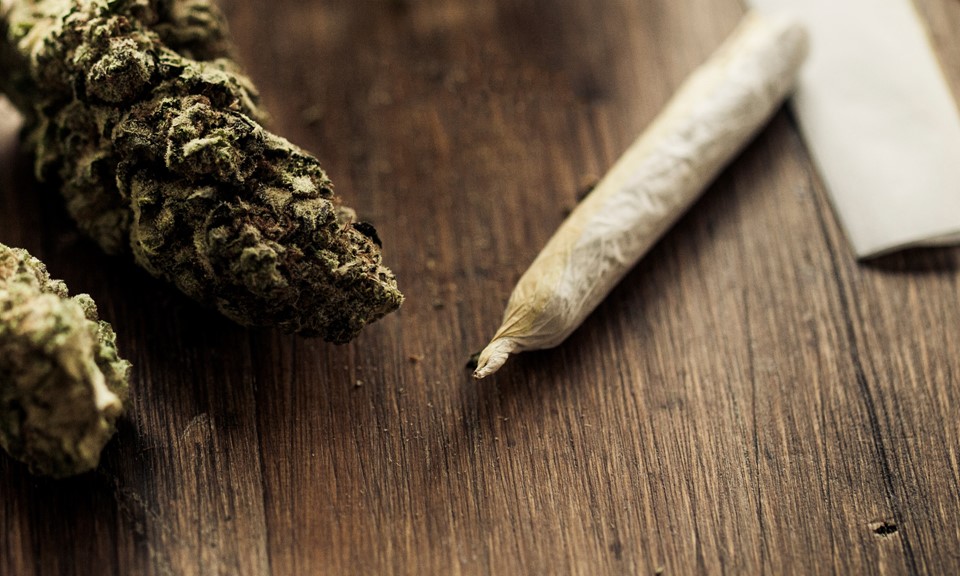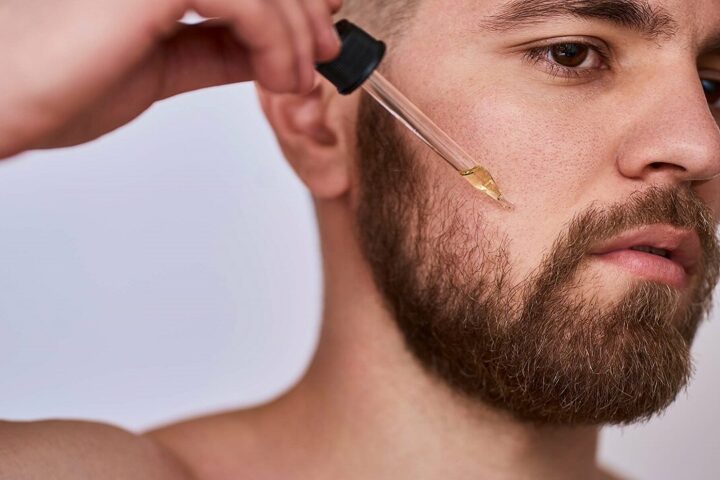Tips and Roaches for Joints
What is Tips and Roaches for Joints
When rolling a joint, tips and roaches are often used to enhance the smoking experience. Here’s what you need to know:
Tips:
Tips, also known as filters, are small pieces of paper or cardboard that are inserted into one end of a joint to create a mouthpiece. Tips provide several benefits, including making it easier to hold the joint, reducing the amount of tar and debris that is inhaled, and preventing loose bits of cannabis from being sucked through the joint and into your mouth.
Roaches:
Roaches, also known as crutches or filters, are similar to tips but are made of thicker materials such as cardboard or plastic. Roaches are rolled up and inserted into the end of the joint, and provide a more sturdy mouthpiece that can be reused for multiple joints. In addition to the benefits of tips, roaches can also help to reduce wastage and improve the burning of the joint.
When choosing tips or roaches for your joint, there are several factors to consider, including:
- Material: Tips and roaches can be made from a variety of materials, including paper, cardboard, or plastic. Consider the material that best suits your preferences and smoking style.
- Size: Tips and roaches come in different sizes, with larger sizes providing a wider mouthpiece and smaller sizes providing a tighter draw. Consider the size that best suits your smoking preferences.
- Brand: There are many different brands of tips and roaches available on the market, each with their own unique features and benefits. Consider researching different brands and reading reviews to find a product that meets your needs.
In conclusion,
tips and roaches are essential components of a joint that can enhance the smoking experience and reduce the amount of tar and debris that is inhaled. When choosing tips or roaches, consider factors such as material, size, and brand to find a product that best suits your preferences and smoking style.
How to Use Tips and Roaches for Joints
Using tips and roaches for joints is a simple process that can greatly enhance your smoking experience. Here’s how to use them:
Tips:
To use a tip, take a small piece of paper or cardboard and fold it into a Z-shape. Then, roll the tip into a cylinder and insert it into one end of the joint. Make sure to leave enough room at the end of the joint for the tip to stick out, creating a mouthpiece. Once the tip is inserted, pack the joint with your desired amount of cannabis and twist the other end shut.
Roaches:
To use a roach, take a piece of cardboard or plastic and roll it into a cylinder. Then, insert the roach into the end of the joint, making sure to leave enough room for the mouthpiece. Pack the joint with your desired amount of cannabis and twist the other end shut.
When using tips and roaches, it’s important to remember a few things:
- Don’t overpack: When inserting the tip or roach, make sure not to pack the joint too tightly. This can make it difficult to draw smoke through the joint and can result in a harsher smoking experience.
- Use clean materials: When making tips or roaches, make sure to use clean and safe materials that are free from any harmful chemicals.
- Experiment with sizes: Try using different sizes of tips or roaches to find the one that best suits your smoking style.
In conclusion,
using tips and roaches for joints is a simple process that can greatly enhance your smoking experience. By following these steps and tips, you can easily create a mouthpiece that reduces the amount of tar and debris that is inhaled while smoking.
What are the Benefits of Tips and Roaches for Joints
Tips and roaches are small but important components of a joint that offer several benefits to the smoking experience. Here are some of the benefits of using tips and roaches for joints:
Improved airflow:
By providing a small mouthpiece, tips and roaches help to improve the airflow through the joint. This allows for a smoother and more enjoyable smoking experience.
Reduced wastage:
When smoking a joint without a tip or roach, the end of the joint can often become too small to smoke, resulting in wasted cannabis. By using a tip or roach, you can smoke the entire joint without losing any cannabis.
Less harsh smoke:
Tips and roaches help to filter out some of the tar and debris from the cannabis smoke, resulting in a less harsh smoking experience. This is particularly beneficial for people who are sensitive to harsh smoke or who are trying to reduce their exposure to harmful substances.
Easier to hold:
Tips and roaches provide a more sturdy and easy-to-hold mouthpiece, making it easier to pass the joint between friends or hold onto it while smoking.
Prevents loose bits of cannabis from entering the mouth:
When smoking a joint without a tip or roach, loose bits of cannabis can often be sucked through the joint and into the smoker’s mouth. Using a tip or roach helps to prevent this from happening, providing a cleaner and more enjoyable smoking experience.
In conclusion,
using tips and roaches for joints provides several benefits to the smoking experience, including improved airflow, reduced wastage, less harsh smoke, easier handling, and a cleaner smoke. By incorporating these small components into your joint rolling process, you can enhance your smoking experience and enjoy a smoother, more enjoyable smoke.
What to Look for when shopping for Tips and Roaches for Joints
When shopping for tips and roaches for joints, there are several factors to consider to ensure you get the best product for your smoking experience. Here are some things to look for when shopping for tips and roaches:
Material:
Tips and roaches are typically made from cardboard or paper. Look for tips and roaches made from high-quality, clean materials that are free from any harmful chemicals or toxins.
Size:
Tips and roaches come in various sizes, so consider the size of your joint and the amount of cannabis you will be using to determine the appropriate size. A larger tip or roach may be more suitable for larger joints, while smaller tips or roaches may be better for smaller joints.
Thickness:
The thickness of the tip or roach can also affect the airflow and smoking experience. Thicker tips or roaches can provide a smoother smoke, while thinner ones may provide a more intense flavor.
Packaging:
Look for tips and roaches that are conveniently packaged for ease of use and storage. Some brands may offer pre-rolled tips or roaches, which can save time and effort when rolling a joint.
Brand reputation:
When shopping for tips and roaches, consider the reputation of the brand. Look for brands that are known for their high-quality products and have positive reviews from other customers.
Personal preference:
Ultimately, the best tips and roaches for you will depend on your personal smoking preferences. Consider trying out different brands and sizes to find the ones that work best for you.
In conclusion,
when shopping for tips and roaches for joints, consider the material, size, thickness, packaging, brand reputation, and personal preference to ensure you get the best product for your smoking experience. By selecting high-quality tips and roaches that suit your needs, you can enhance your smoking experience and enjoy a smoother, more enjoyable smoke.
FAQs-Tips and Roaches for Joints
What can I use for a roach in my joint?
If you are referring to a roach as the end of a joint, there are several options you can use to create a makeshift roach. One common method is to roll a small piece of thin cardboard, such as from a business card or a small piece of index card, and insert it into the end of the joint. This helps to provide stability and prevent burning your fingers as you smoke the joint down to the end. Another option is to use a pre-made crutch or filter tip, which can be purchased at many smoke shops or online. These filters provide a more structured and reusable option for your joint. Remember to be cautious when handling any smoking materials and ensure proper disposal to prevent any fire hazards.
What filters for joints?
There are various types of filters that can be used for joints to enhance the smoking experience. Some popular options include pre-rolled filter tips, activated charcoal filters, and glass filters. Pre-rolled filter tips are commonly available and provide a convenient and simple way to add filtration to your joint. Activated charcoal filters are known for their ability to absorb impurities and can help reduce the harshness of the smoke. Glass filters, usually made of heat-resistant borosilicate glass, provide a smoother draw and can be reusable with proper cleaning. It’s important to note that filters are a matter of personal preference, and some people prefer smoking joints without filters. Experimenting with different types of filters can help you find the one that suits your preferences and provides a more enjoyable smoking experience.
What are roach clips used for?
Roach clips are small devices used to hold the end of a joint or a cigarette, commonly referred to as a “roach.” They are designed to provide a secure grip on the roach, allowing the smoker to continue enjoying the remaining portion without burning their fingers. Roach clips typically have a clamp or clip mechanism that holds the roach in place, allowing for a comfortable and controlled grip while smoking. They are especially useful when the roach becomes shorter, making it difficult to hold without burning fingertips or wasting any remaining smoke. Roach clips come in various designs and materials, such as metal, plastic, or wood, and can be found at smoke shops or online.
Where should I apply roach gel?
Roach gel should be applied in areas where roaches are likely to travel or congregate. Common areas to apply roach gel include along baseboards, behind appliances, in cracks and crevices, and near entry points such as windows and doors. It’s important to follow the instructions provided with the specific roach gel product you are using, as different formulations may have slightly different application recommendations. Generally, roach gel is applied as small dots or thin lines in areas where roaches are known to frequent. The gel acts as bait, attracting roaches, and they consume it, which helps to control and eliminate the infestation. Be sure to keep roach gel out of reach of children and pets and avoid applying it on surfaces where food is prepared or consumed.
Where do you put roach gel?
Roach gel should be placed in areas where roaches are commonly found or where they travel. Common locations to apply roach gel include along baseboards, in cracks and crevices, behind appliances, near plumbing pipes, and in corners of cabinets. The gel should be applied in small, pea-sized amounts or thin lines, following the instructions provided with the specific roach gel product you are using. It’s essential to target areas where roaches are likely to come into contact with the gel and consume it as bait. Avoid applying the gel in areas where it may come into contact with food, dishes, or utensils. Additionally, keep the roach gel out of reach of children and pets. Regularly monitor the gel placements and reapply as needed to effectively control the roach infestation.
How long does it take for roach gel to work?
The time it takes for roach gel to work can vary depending on the severity of the infestation and the specific product being used. In general, roach gel is designed to be fast-acting, and you may start noticing a reduction in roach activity within a few days. However, complete elimination of the infestation can take several weeks or even months, depending on the size and resilience of the roach population. It’s important to follow the instructions provided with the roach gel and be patient during the treatment process. Regularly monitor the affected areas, reapply the gel as needed, and maintain good sanitation practices to support the effectiveness of the treatment. If you continue to experience persistent roach problems despite using roach gel, it may be necessary to seek professional pest control assistance.
How do you know if roach gel is working?
There are several signs that can indicate whether roach gel is working effectively. Firstly, you may notice a decrease in roach sightings. If you were previously seeing a high number of roaches in your home, a reduction in their presence is a positive indication that the gel is starting to work. Additionally, you may observe dead or dying roaches in and around the treated areas. This suggests that the roaches have consumed the gel and are being affected by it. Another sign is a decrease in roach activity, such as fewer roaches scurrying around or finding fewer roach droppings. It’s important to remember that complete elimination of a roach infestation can take time, and persistence with the treatment is necessary. If you continue to see active roach activity or the infestation persists despite using roach gel, it may be advisable to seek professional pest control assistance.
How long is roach gel good for?
The shelf life or expiration date of roach gel can vary depending on the brand and formulation. It’s important to check the packaging or the product label for specific information regarding its shelf life. Generally, roach gels have a shelf life of around one to two years when stored properly. It’s recommended to store roach gel in a cool, dry place, away from direct sunlight and extreme temperatures. Keep the gel tightly sealed to prevent drying out or contamination. Over time, the effectiveness of roach gel may diminish, so it’s advisable to regularly check the expiration date and replace the product if it has expired or is past its recommended use-by date. Using fresh and properly stored roach gel ensures maximum effectiveness in controlling and eliminating roach infestations.
Which roach gel works best?
There are several roach gels available on the market, and the effectiveness may vary depending on the specific needs of your situation and the type of roaches you are dealing with. Some popular roach gel brands that are known for their effectiveness include Advion, Maxforce, and Combat. These gels typically contain powerful active ingredients that are attractive to roaches and can effectively control and eliminate infestations. It’s important to carefully follow the instructions provided with the chosen roach gel and apply it in areas where roaches are likely to come into contact with it. Additionally, maintaining good sanitation practices and eliminating food and water sources for roaches can enhance the effectiveness of the roach gel treatment. If you are dealing with a severe or persistent roach infestation, it may be advisable to consult a professional pest control service for expert guidance and treatment.
Does roach gel harden?
Yes, roach gel can harden over time. Roach gel typically has a gel-like consistency when first applied, making it easy to place in cracks, crevices, and other areas where roaches are likely to encounter it. However, as time passes, the gel may dry out and harden. This can happen due to exposure to air, changes in temperature, or simply as a natural property of the gel formulation. When roach gel hardens, it may become less effective as roaches may not be able to consume it as easily. It’s important to monitor the gel placements regularly and replace any hardened gel with fresh gel as needed to maintain the effectiveness of the treatment. Storing the roach gel properly in a cool, dry place and tightly sealing the container can help prevent premature drying and hardening of the gel.
Does roach gel dry out?
Roach gel can dry out over time, especially when exposed to air or if not properly stored. The drying out of roach gel can affect its effectiveness in attracting and eliminating roaches. When the gel dries out, it may lose its attractive scent and become less appealing to roaches. As a result, roaches may not be as likely to consume the dried-out gel, reducing the efficacy of the treatment. To prevent roach gel from drying out, it’s important to tightly seal the container when not in use and store it in a cool, dry place. Additionally, regularly check the gel placements and replace any dried-out gel with fresh gel as needed. This ensures that the roach gel remains effective in attracting and eliminating roaches, providing optimal pest control results.
Is roach gel safe for humans?
Roach gel is generally considered safe for humans when used according to the instructions provided by the manufacturer. The active ingredients in roach gel are typically targeted towards insects and pose low toxicity to humans and pets when used as directed. However, it is important to handle roach gel with care and follow safety precautions. Avoid direct contact with the gel and wash hands thoroughly after handling it. Additionally, keep roach gel out of reach of children and pets to prevent accidental ingestion. If you have specific health concerns or sensitivities, it is recommended to consult the product label or seek advice from a healthcare professional before using roach gel. Overall, when used responsibly and according to the instructions, roach gel is an effective tool for controlling roach infestations while maintaining safety for humans.
How do you remove roach gel?
To remove roach gel, start by using disposable gloves to avoid direct contact with the gel. Gently scrape off the gel using a paper towel or a disposable plastic scraper. If the gel has hardened and is difficult to remove, you can try softening it by applying a small amount of warm, soapy water to the area. Allow the water to soak in for a few minutes to loosen the gel, then gently wipe it away with a cloth or paper towel. Once the gel has been removed, thoroughly clean the area with a mild detergent or disinfectant to remove any residue. Dispose of the used paper towels, gloves, or other cleaning materials in a sealed plastic bag and discard them properly. Remember to follow any specific instructions provided by the manufacturer of the roach gel for proper removal and disposal.
How effective is anti roach gel?
Anti-roach gel can be highly effective in controlling and eliminating roach infestations. The gel is formulated with active ingredients that are attractive to roaches, drawing them in to consume it. Once ingested, the gel acts as a slow-acting poison, allowing the roach to carry the toxic substance back to its colony. This method of secondary poisoning helps to eliminate not only the roaches that directly consume the gel but also those that come into contact with the affected roach or its feces. Anti-roach gel can be particularly effective in hard-to-reach areas where traditional sprays or powders may be less effective. However, the effectiveness of the gel can vary depending on factors such as the severity of the infestation, the type of roach species, and proper application according to the manufacturer’s instructions. It’s important to use anti-roach gel as part of an integrated pest management approach, including good sanitation practices and identifying and sealing off entry points to prevent re-infestation. If you’re dealing with a persistent or extensive roach infestation, it may be necessary to consult a professional pest control service for more comprehensive and targ
How often do you replace roach gel?
The frequency of replacing roach gel depends on various factors, including the specific product used, the severity of the roach infestation, and the manufacturer’s recommendations. In general, roach gel should be monitored regularly to ensure its effectiveness. If the gel becomes dry, hardened, or depleted, it should be replaced with fresh gel. It’s important to follow the instructions provided by the manufacturer regarding the duration of effectiveness and when to replace the gel. Additionally, if you notice a resurgence of roach activity or if the infestation persists despite the use of roach gel, it may be necessary to consider alternative methods or consult a professional pest control service for further guidance. Regular inspection and maintenance are key to effectively managing roach infestations and ensuring the ongoing efficacy of roach gel treatments.
- Sweet Tart Weed Strain Information - April 27, 2024
- Expert Guide to White Fire OG (WiFi OG) Weed Strain Information - April 20, 2024
- Expert Guide to Animal Face (Animal Face #10) Weed Strain Information - April 20, 2024












